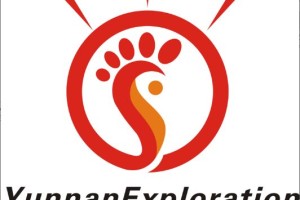
XishuangBanna Nationalities Museum
The Xishuangbanna Ethnic Museum (西双版纳民族博物馆) is located on Rainforest Avenue (雨林大道) in the Mannongfeng Area (曼弄枫片区) of the Tourism Resort Zone in Jinghong City (景洪市), Xishuangbanna Dai Autonomous Prefecture (西双版纳傣族自治州), Yunnan Province (云南省). Covering 100,000 square meters with a building area of over 20,000 square meters and an exhibition space of 4,300 square meters, it is a comprehensive local museum.
The museum opened to the public on November 11, 2010. Its collections include stone tools, bronze ware, pottery, porcelain, silverware, bamboo and wooden artifacts, currency, folk cultural relics, and memorabilia from the “sent-down youth” movement. According to the China Museum Chronicle, the museum holds 2,400 items, categorized into Ancient, Folk, and Sent-down Youth collections.
Admission is free, and the museum is open daily from 9:00 to 17:00 (closed on Mondays, open on weekends).
History

Construction of the Xishuangbanna Ethnic Museum began on November 10, 2008, and it officially opened on November 11, 2010.
Architectural Layout
Overview
The museum covers 100,000 square meters, with a building area exceeding 20,000 square meters and an exhibition area of 4,300 square meters.
Exhibition Halls
The museum consists of an introductory hall, five permanent exhibition halls, and two temporary exhibition halls.
The five main exhibitions are:

- “Looking Back at Mengle — Historical Sails of Xishuangbanna” – showcases the region’s history through archaeological finds, Chinese and Dai-language documents, and stories of development since the liberation of Xishuangbanna on February 17, 1950.
- “Song of Harmony — Ethnic Charms of Xishuangbanna” – presents the cultures of the 13 indigenous ethnic groups, including Dai, Hani, Bulang, Jinuo, and Lahu.
- “Rainforest Elegance — Natural Glimpses of Xishuangbanna” – features the area’s geography, nature, and biodiversity.
- “Culture Enriching the Border — A Harmonious Homeland of Many Ethnicities” – highlights cultural heritage, folk arts, and the role of culture in social development.
- “Good-neighborly Friendship — An Open and Dynamic Xishuangbanna” – illustrates historical and modern exchanges with Mekong River Basin countries, including economic, cultural, and tourism cooperation.
The History and Contemporary sections follow a chronological narrative, while the Ethnic section displays traditional tools, clothing, musical instruments, and intangible heritage. The Nature section uses 3D models, photographs, and specimens to present Xishuangbanna’s unique natural environment, known as the “Kingdom of Animals,” “Kingdom of Plants,” and “Gene Bank of Species.”
Collections
Overview
The museum’s collections come from transfers by the Xishuangbanna Prefecture CPPCC, the former Cultural Relics Administration, archaeological excavations, and private donations. Most artifacts are stone tools, bronze ware, pottery, porcelain, silverware, bamboo and wooden items, currency, folk objects, and sent-down youth memorabilia. There are 2,400 pieces in total, classified as Ancient, Folk, or Sent-down Youth relics.
Notable Items
Significant artifacts include:
- Tang Dynasty cicada-bead-pattern silver bowl
- Neolithic shouldered stone axe
- Ming Dynasty ivory Tusi seal
- Qing Dynasty wooden Tusi seal
Conservation
The museum employs professional storage equipment, anti-theft and fire prevention systems, constant temperature and humidity controls, and monitoring systems to protect its collections.
Cultural Activities
The museum organizes guided visits for local officials, military personnel, students, and community members to promote patriotism and knowledge of local history, ethnic culture, and rainforest ecology. On occasions such as International Museum Day (May 18) and Cultural Heritage Day, the museum conducts public awareness campaigns on cultural relic protection through street events, leaflets, banners, radio, and newspapers.

Role and Significance
The Xishuangbanna Ethnic Museum is a comprehensive institution integrating ethnic culture, artifact preservation, scientific research, and public education. It also serves as the Prefecture’s Cultural Relics Administration and the Puer Tea History Research Institute. It manages, protects, and researches major cultural relics, including:
- National-level protected sites: Manfeilong White Pagoda (曼飞龙白塔), Jingzhen Octagonal Pavilion (景真八角亭), Manduan Buddhist Temple (曼短佛寺)
- Provincial-level protected sites: Manchunman Buddhist Temple (曼春满佛寺), Mange Buddhist Temple (曼阁佛寺), China–Myanmar Talks Monument (中缅会谈纪念碑), Li Dingguo Ancestral Hall (李定国祠)
- Prefecture-level protected sites: Premier Zhou Enlai Boshuai Site (周恩来总理波水遗址), Zhuangmota (庄莫塔), Baiyun Cave Cliff Inscriptions (白云洞摩崖), Jingzhen Central Pagoda (景真中心塔), Mengzhe Buddhist Temple Murals (勐遮佛寺壁画), Menglong Martyrs Cemetery (勐龙烈士陵园)
The museum is a platform for patriotic education, cultural research, leisure tourism, and international cultural exchange.
Organization
- Directors: Yu Shaojian (余少剑, 2010–present)
- Institution Type: Public institution fully funded by government allocation
- Departments: Administration Office, Education Department, Exhibition Department, Research Department, Conservation Department, Collection Management Department, Security Department
- Staff Size: 22 people
- Annual Visitors: Over 300,000
Visitor Information
Location: Rainforest Avenue (雨林大道), Mannongfeng Area (曼弄枫片区), Tourism Resort Zone, Jinghong City (景洪市), Xishuangbanna Dai Autonomous Prefecture (西双版纳傣族自治州), Yunnan Province (云南省).
Opening Hours: 9:00–17:00 daily (closed Mondays)
Admission: Free

 7 Days GolfingTour
7 Days GolfingTour
 8 Days Group Tour
8 Days Group Tour
 8 Days Yunnan Tour
8 Days Yunnan Tour
 7 Days Shangri La Hiking
7 Days Shangri La Hiking
 11 Days Yunnan Tour
11 Days Yunnan Tour
 6 Days Yuanyang Terraces
6 Days Yuanyang Terraces
 11 Days Yunnan Tour
11 Days Yunnan Tour
 8 Days South Yunnan
8 Days South Yunnan
 7 Days Tea Tour
7 Days Tea Tour
 8 Days Muslim Tour
8 Days Muslim Tour
 12 Days Self-Driving
12 Days Self-Driving
 4 Days Haba Climbing
4 Days Haba Climbing
 Tiger Leaping Gorge
Tiger Leaping Gorge
 Stone Forest
Stone Forest
 Yunnan-Tibet
Yunnan-Tibet
 Hani Rice Terraces
Hani Rice Terraces
 Kunming
Kunming
 Lijiang
Lijiang
 Shangri-la
Shangri-la
 Dali
Dali
 XishuangBanna
XishuangBanna
 Honghe
Honghe
 Kunming
Kunming
 Lijiang
Lijiang
 Shangri-la
Shangri-la
 Yuanyang Rice Terraces
Yuanyang Rice Terraces
 Nujiang
Nujiang
 XishuangBanna
XishuangBanna
 Spring City Golf
Spring City Golf
 Snow Mountain Golf
Snow Mountain Golf
 Stone Mountain Golf
Stone Mountain Golf




